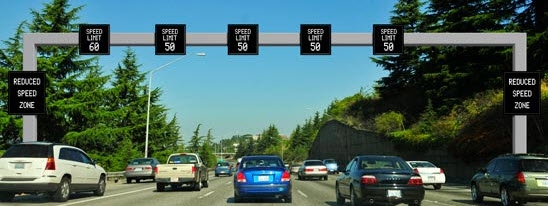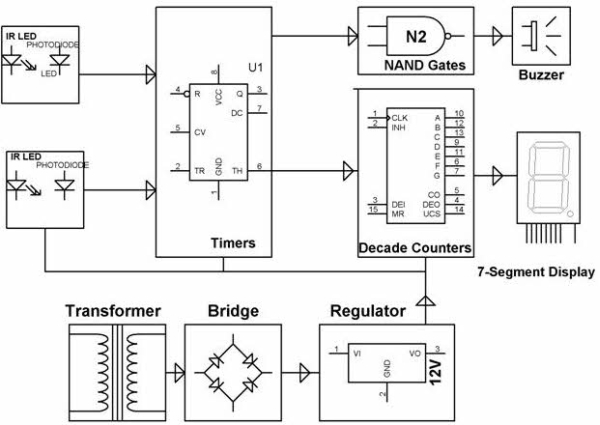While driving on highways, drivers should not exceed the maximum speed limit permitted for their vehicle. However, accidents keep on occurring due to speed violations as drivers follow their speedometers and control their speed according to them, and reduce the speed if they find it to be exceeding and beyond their control. A highway speed checker comes handy for the traffic police, especially against the speed limit violators because it provides the digital display as well as buzzing sound or alarm to detect any vehicle speed if the vehicle exceeds the permitted speed limit.
The make up of these highways, sometimes leads to accidents because most of the times, there is no rule to govern speed limits on these highways. To overcome this problem, we have implemented a circuit called as a speed checker for highways. This kit is inexpensive and it is used for considering the average and high speed of vehicles that move on the highways or roads.

1. A Speed Checker to Detect Rash Driving on Highways Using a Timer
Nowadays, in our daily life most of the accidents occur due to rash driving on highways which may lead to the loss of many lives. Therefore, to overcome this problem, the following project implements a speed checker to detect rash driving on highways by using a timer.
The main objective of this system is to develop a highway speed-checker device that detects rash driving on highways and alerts, traffic authorities if the speed checker finds any vehicle violating the set speed limits on highways.
The proposed system checks rash driving by calculating the speed of a vehicle by using the time taken to travel between the two set points placed on the road at a certain distance. A set point consists of a couple of sensors comprising an IR transmitter and an IR receiver, which are placed on either side of the road. The speed limit is set by the police who use the system depending on the traffic at each location.
The time taken by the vehicle to travel from one set point to the other is calculated by the control circuit. Based on the time that has elapsed between the two sensors, the control circuit calculates the speed and displays the result on a seven segment display. If a vehicle exceeds the speed limit between transmitter and receiver, then this system emanates a buzzing sound as an alarm and alerts the police.
 2. A Speed Checker to Detect Rash Driving on Highways by Using a Microcontroller
2. A Speed Checker to Detect Rash Driving on Highways by Using a Microcontroller
The main purpose of this system is to develop a speed checker for highways using a microcontroller and to alert the traffic authorities in case of any speed violation. Many passengers and drivers, including commuters have lost their lives due to rash and rude driving on highways.
In olden days, for detecting rash driving, highway police used to target vehicles by using radar guns at the vehicle and would record their speeds. If a vehicle would exceed its speed, automatically the information would reach to the nearest police station for controlling the speed of the vehicle. Due to this system a lot of time would get wasted.
For more detail: Projects on Speed Checker To Detect Rash Driving On Highways

